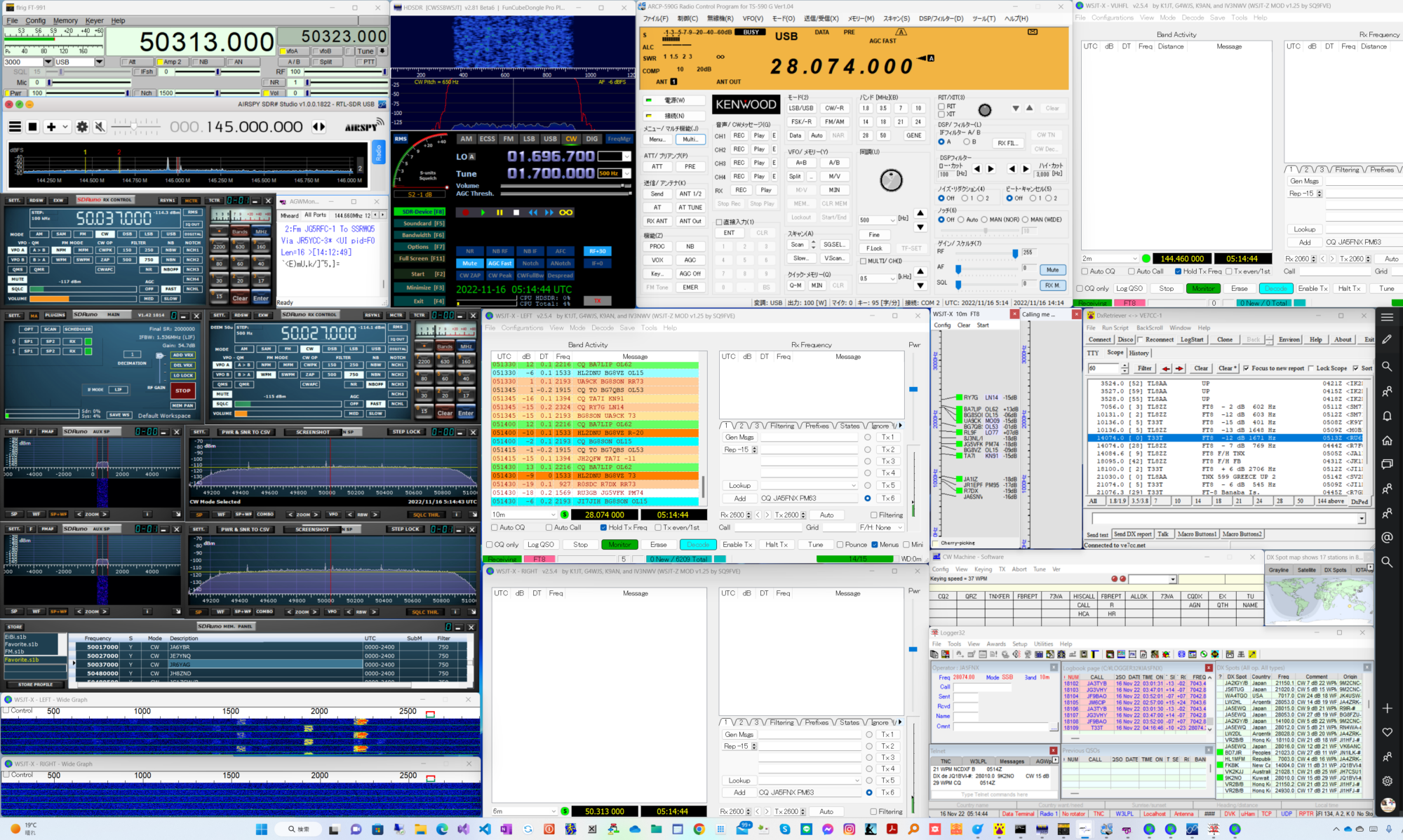Forwarded by Bunshiro Tamura
———————– Original Message ———————–
From: Joe Taylor
To: WSJT software development
Date: Wed, 7 Mar 2018 15:27:41 -0500
Subject: [wsjt-devel] DXpedition Mode Test Results
—-
Hi all,
Here are a few highlights of results from last night’s public test of FT8 DXpedition Mode:
– The overwhelming majority of participating Hounds operated as intended, and according to instructions. I copied 190 unique Hound callsigns during the 2300 hour (when I was acting as Fox on 20m) and 330 unique callsigns during the whole four hours. I suppose that we had at least 400-500 participants, maybe more.
– Fox’s multi-signal capability worked very well at the tested values, NSlots = 3, 4, and 5. This feature is surely a “keeper”, and I see no reason not to use NSlots = 5 — especially if Fox is running power.
– In the four test hours the number of “QSOs” logged by Foxes on 20, 30, 40, and 80m was 320, 189, 454, and 351. However, a regrettable program bug was preventing deletion of Hound callsigns from Fox’s “QSO-in-Progress” list after a QSO had been logged. As a result, many repeated “RR73” messages were sent, many dupe QSOs were logged, and the QSO-in-Progress list kept growing. As another consequence, some QSOs took up to ~20 min to complete, and a number of Hounds who had been sent a report never received their QSO-confirming “RR73”.
– AA7A actually worked 120 unique calls in the 40m hour, and the other Foxes worked comparable slightly lower numbers. When this program bug is corrected, hourly QSO in the 300-400 range should certainly be achievable.
– Of course, some Hounds did not operate as intended. Several kept trying to raise Fox by calling below 1000 Hz. (Most of these that I noticed were from non-English speaking countries. We will probably need translations of the FT8 DXpedition Mode User Guide.) A few would-be Hounds were not obviously not using v1.9.0-rc2, and were calling Fox “blind” in 1st sequence. A few Hounds tried using compound callsigns, which is not supported — and which needs to be made more clear in the instructions.
– Nearly everybody noticed the XE1GK calling CQ on the low-end Fox frequency and working people these. Please don’t be too hard on Ignacio: he obviously misunderstood what was supposed to be happening, and how to operate in the test run. He sent me an abject apology. Anyway, his signal helped us to evaluate how well we can cope with QRM and DQRM.
Two operating hints that should be used as needed, but in general were not:
– Hounds should manually reset their Tx frequency as needed to evade QRM.
– Fox may decide to use the randomizing feature to vary his own Tx frequency.
I list here some relatively minor bugs and other things that came to light during the test run:
– Spurious “Callsign mismatch” warning messages were displayed to the Fox operator.
– Fox’s log window should automatically scroll to the bottom. Or maybe it should simply show the most recent ~10 QSOs logged.
– I’m not sure that Fox’s “Max Calls” parameter worked as designed.
– Sometimes Fox sent RR73 to the same station in more that one slot, in the same transmission.
– The dreaded “Blue Decode” button was seen by some.
– Hounds sometimes send a spuriously low signal report to Fox, even when Fox is loud.
– If Hound hits “Enter” with the DX Call box empty, a blank message can be transmitted.
– It a random station (not Fox) calls a Hound, it can trigger a Hound transmission just as if Fox had called.
– Previously decoded Hound calls can sometimes reappear in Fox’s left window, when they should not.
Finally, let me outline a few new features we may decide to implement.
– At least for debugging, and possibly as an option, offer a display window that shows the Fox operator the contents of all active queues.
– Limit the number of QSOs in progress to no more than NSlots.
– Option to suppress display of the waterfall timestamp.
– Have Fox call CQ in one slot at least once every few (1 or 2?) minutes.
– Should Hound’s Tx3 frequency be re-randomized for each repeat try?
I’m sure there is more to be said, but that will do for now. Depending on programming progress and on my own travel schedule, we may schedule another public test within a few weeks.
— 73, Joe, K1JT
——————————————————————————
Check out the vibrant tech community on one of the world’s most
engaging tech sites, Slashdot.org! http://sdm.link/slashdot
_______________________________________________
wsjt-devel mailing list
wsjt-devel@lists.sourceforge.net
https://lists.sourceforge.net/lists/listinfo/wsjt-devel
——————— Original Message Ends ——————–


